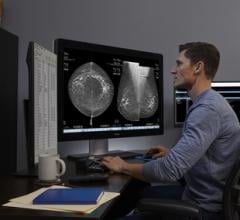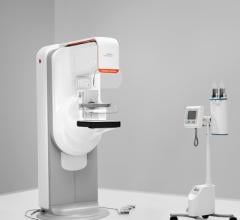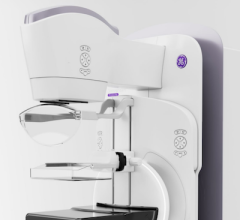
September 28, 2015 — A costly tool used on nearly all mammograms does not increase cancer detection rates and should no longer be covered by Medicare, argues Joshua Fenton, a family physician and comparative effectiveness researcher. Fenton’s editorial on the subject was published online Sept. 25 in the Journal of the American Medical Association Internal Medicine.
Fenton’s editorial responds to a study published in the same issue that announces findings from the largest study ever on computer-aided detection (CAD), a tool approved by the U.S. Food and Drug Administration nearly 20 years ago to help radiologists interpret screening mammograms by automatically marking potentially suspicious spots for further radiological review.
The study was led by Constance D. Lehman, M.D., Ph.D., currently director of breast imaging and co-director of the Avon Comprehensive Breast Evaluation Center at Massachusetts General Hospital in Boston, who conducted the research while at the University of Washington in Seattle. University of California Davis Dean’s Professor in Biostatistics Diana Miglioretti was senior author on the study, which found that CAD used with mammography did not improve the accuracy of diagnosis, and that its use may in fact result in missed cancers.
“The study by Lehman, et al., provides evidence that CAD yields no clear benefits in a large, diverse U.S. sample of women undergoing digital mammography,” Fenton wrote. “Thus we should question whether society should continue to pay for CAD use.”
Using data from the Breast Cancer Surveillance Consortium, Lehman’s observational study looked at 323,973 women undergoing digital screening mammography in diverse U.S. practices between 2003 and 2009. Mammograms were interpreted by 271 radiologists from 66 facilities. Tumor registry data identified 3,159 breast cancers within one year of screening.
For the study, the researchers analyzed the mammography performance, including its sensitivity (the proportion of cancers positively detected), specificity (the proportion of accurate negative findings), the number of cancers detected during mammography and those discovered within 12 months of a negative mammogram finding. They found that screening performance was not improved with CAD on any one of the assessed metrics. In fact, they found that sensitivity was significantly decreased for mammograms interpreted with CAD among radiologists who interpreted results with and without the added technology.
In the editorial, Fenton, who also has published several research articles about the merits of CAD, said any potential positive effects of CAD may be undetectable in the context of digital mammography, which may improve the radiologist’s interpretation regardless of CAD.
Since Medicare agreed to cover the cost of CAD in 2000, its use has surged to over 90 percent of U.S. mammograms. Lehman estimated that its prolific use adds up to more than $400 million per year, or $1 of every $10,000 spent on healthcare.
Miglioretti, who was senior author on the Lehman study and has a joint appointment as a senior investigator at Group Health Research Institute, said the results of the CAD research suggest that federal regulators and payers should base coverage determinations on facts.
“We need to make sure there is stronger evidence for new technologies before we start paying for them,” she said, “and before people are charged extra money for them.”
For more information: www.ucdmc.ucdavis.edu/cancer


 December 17, 2025
December 17, 2025 









